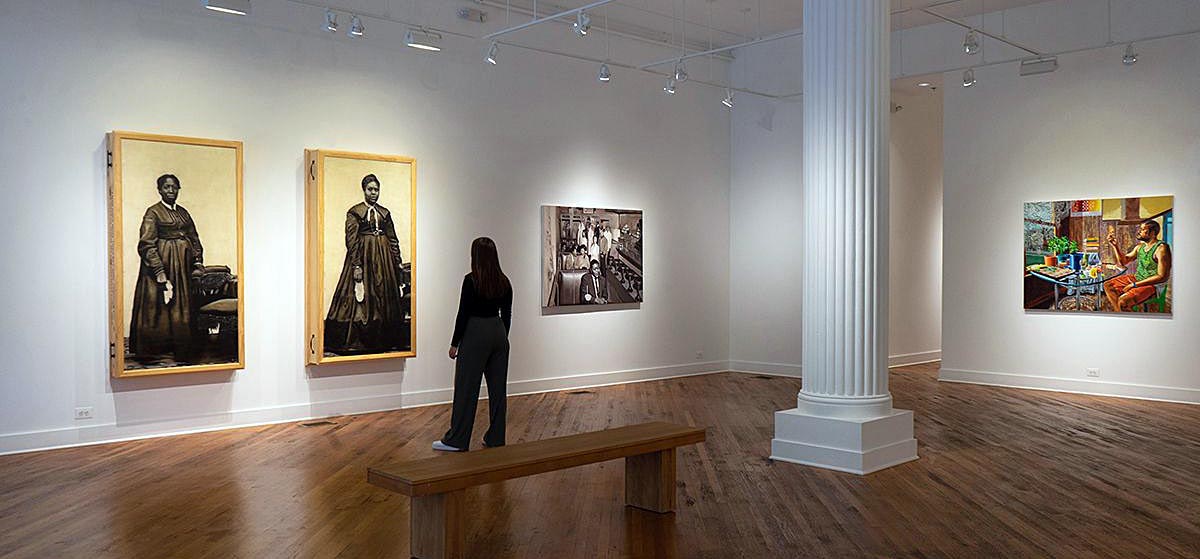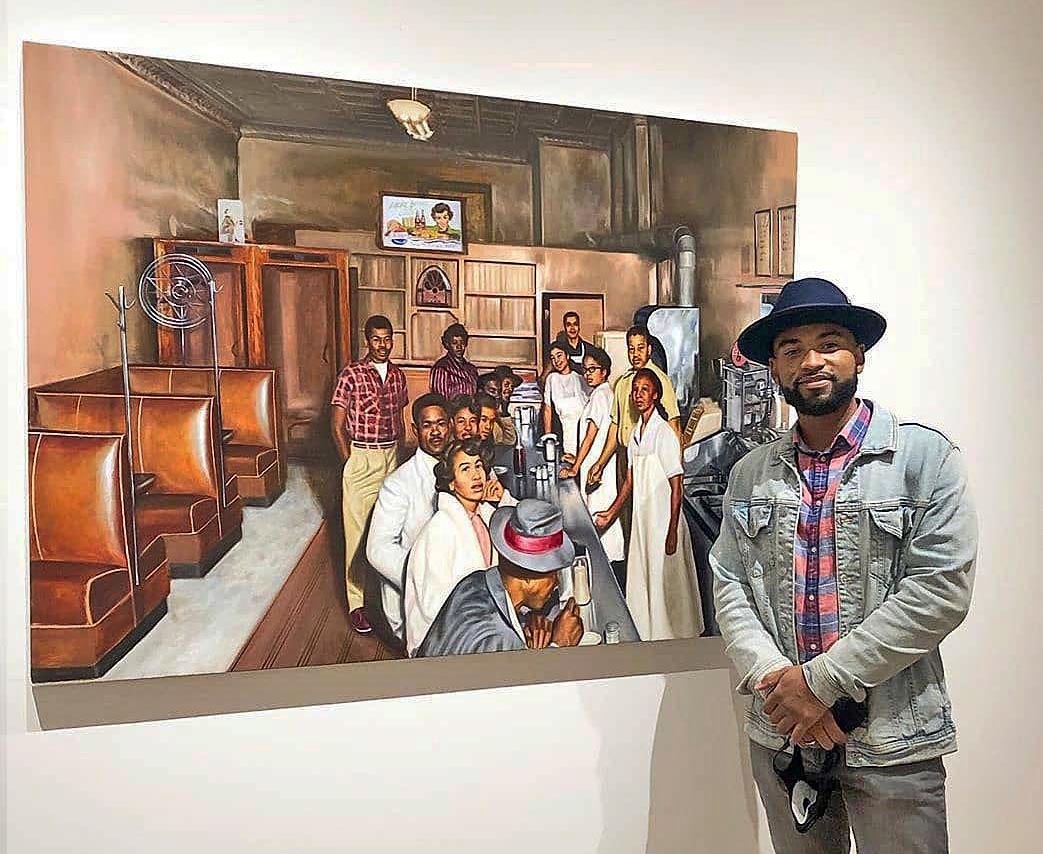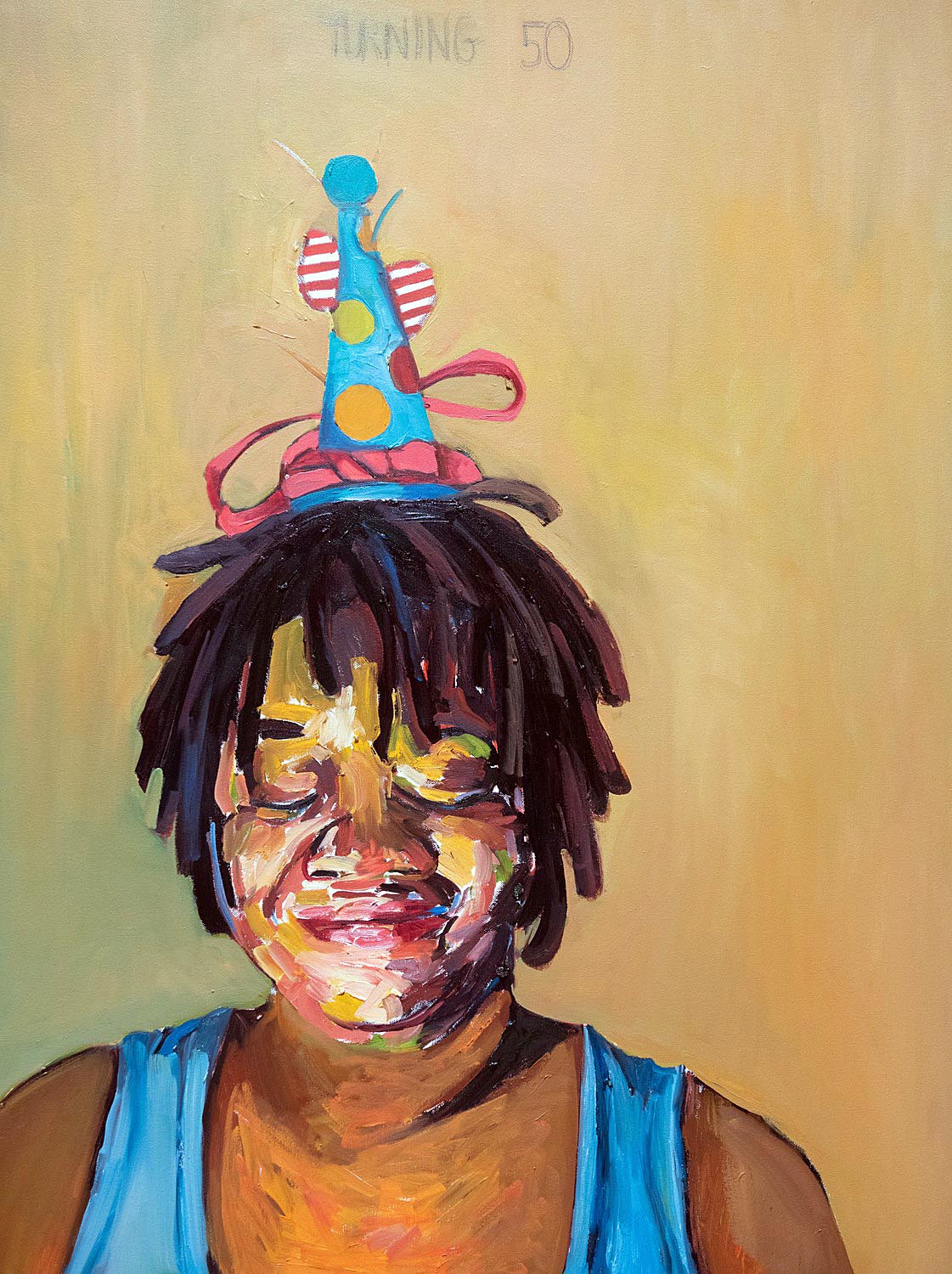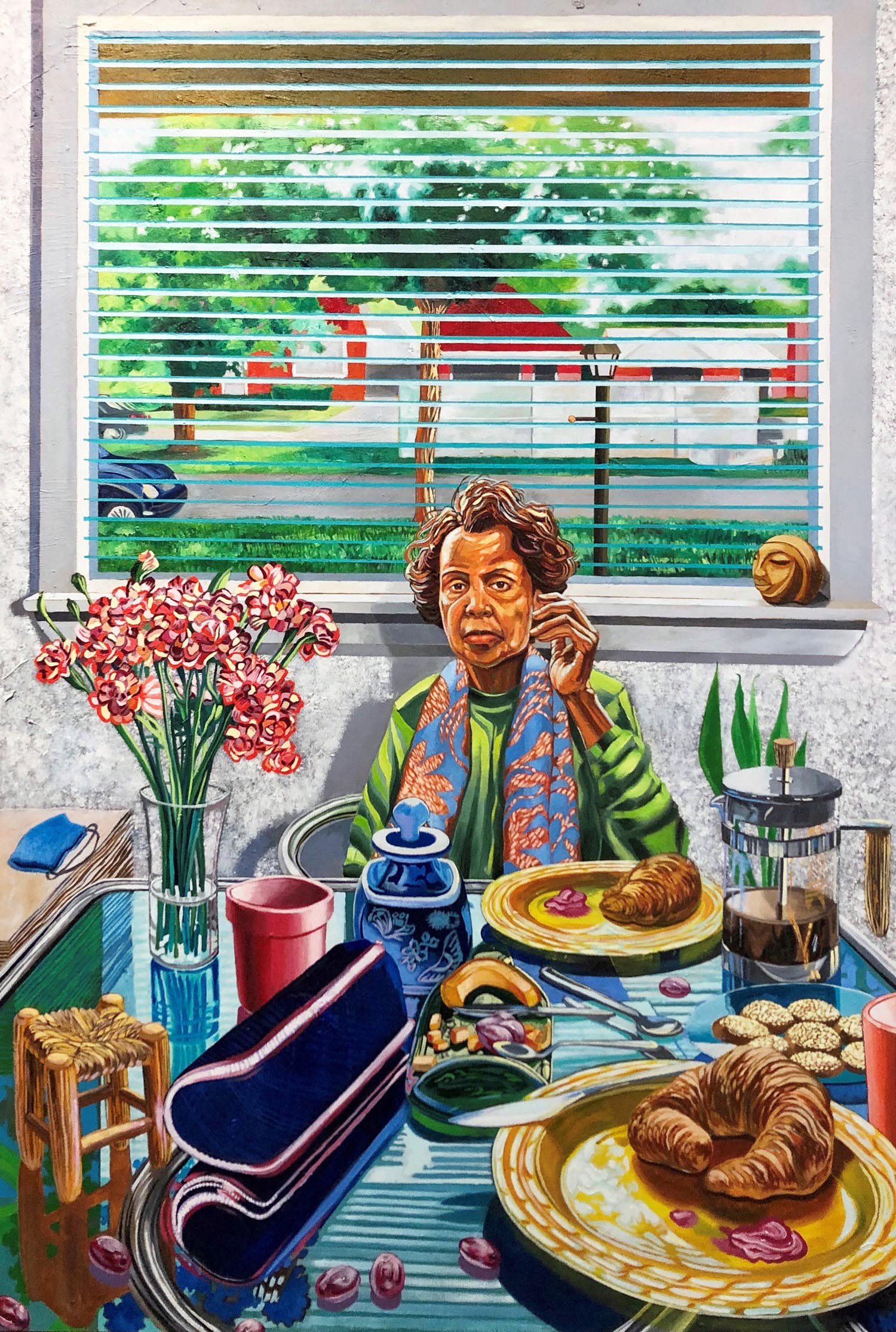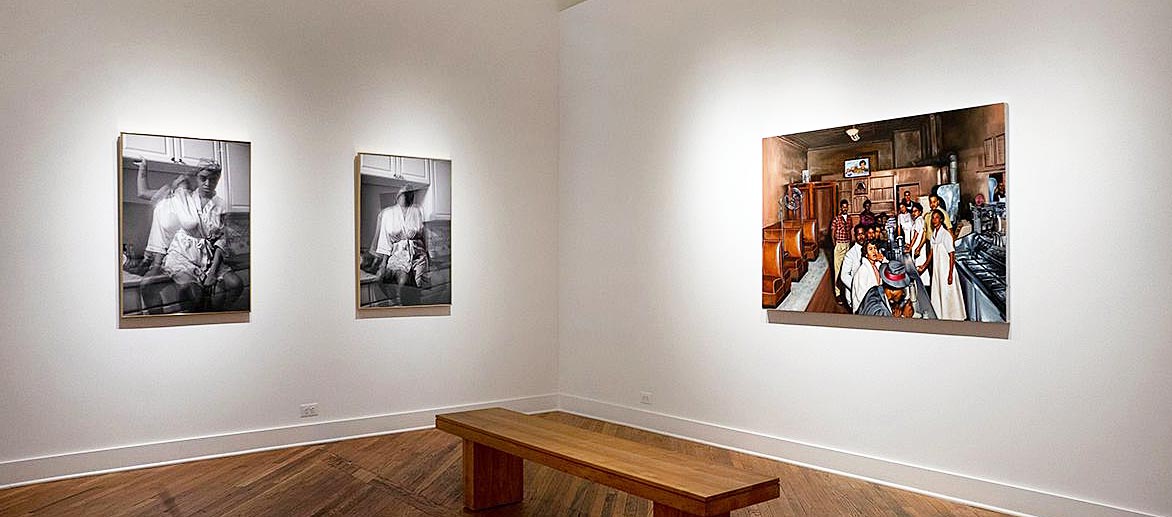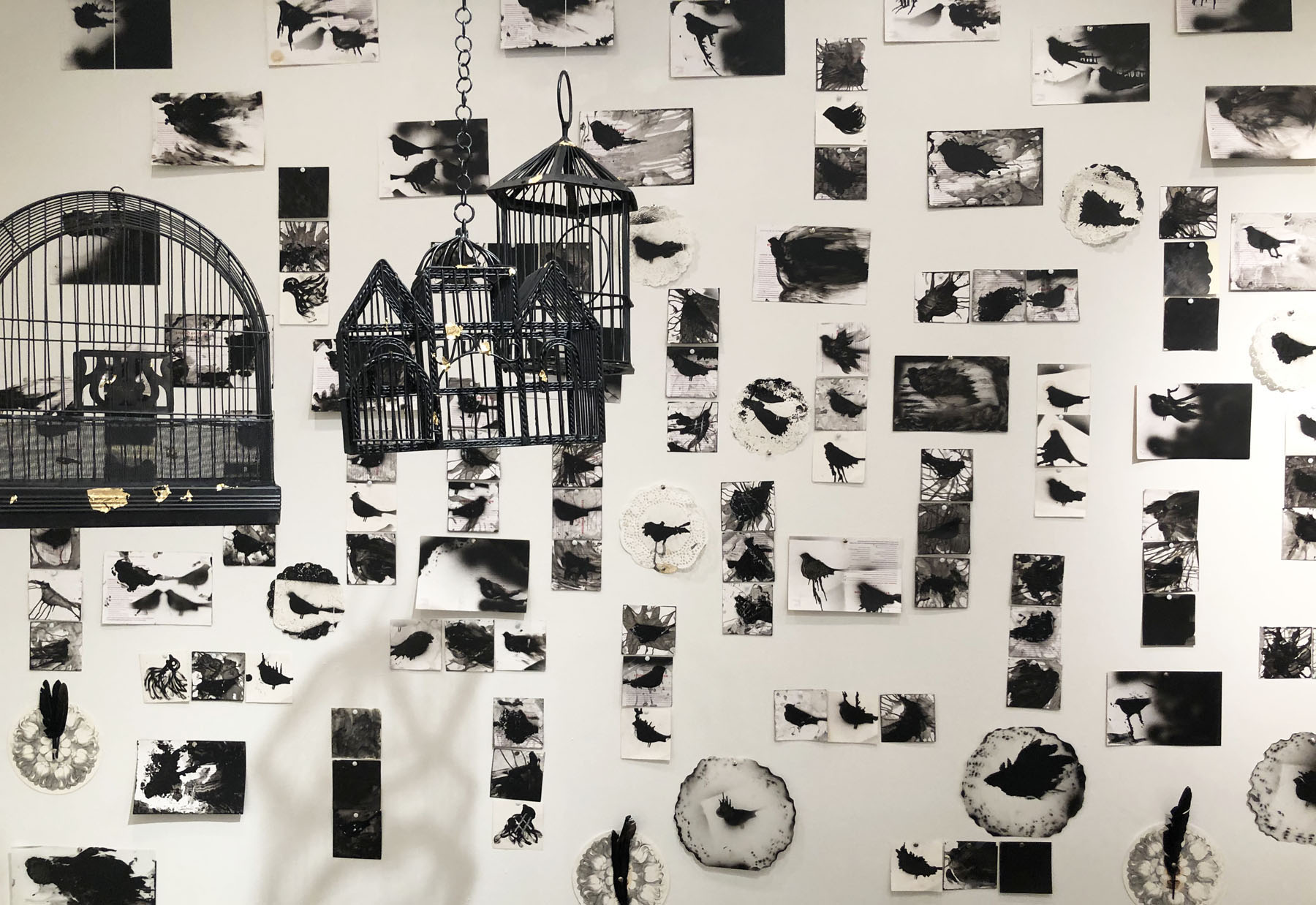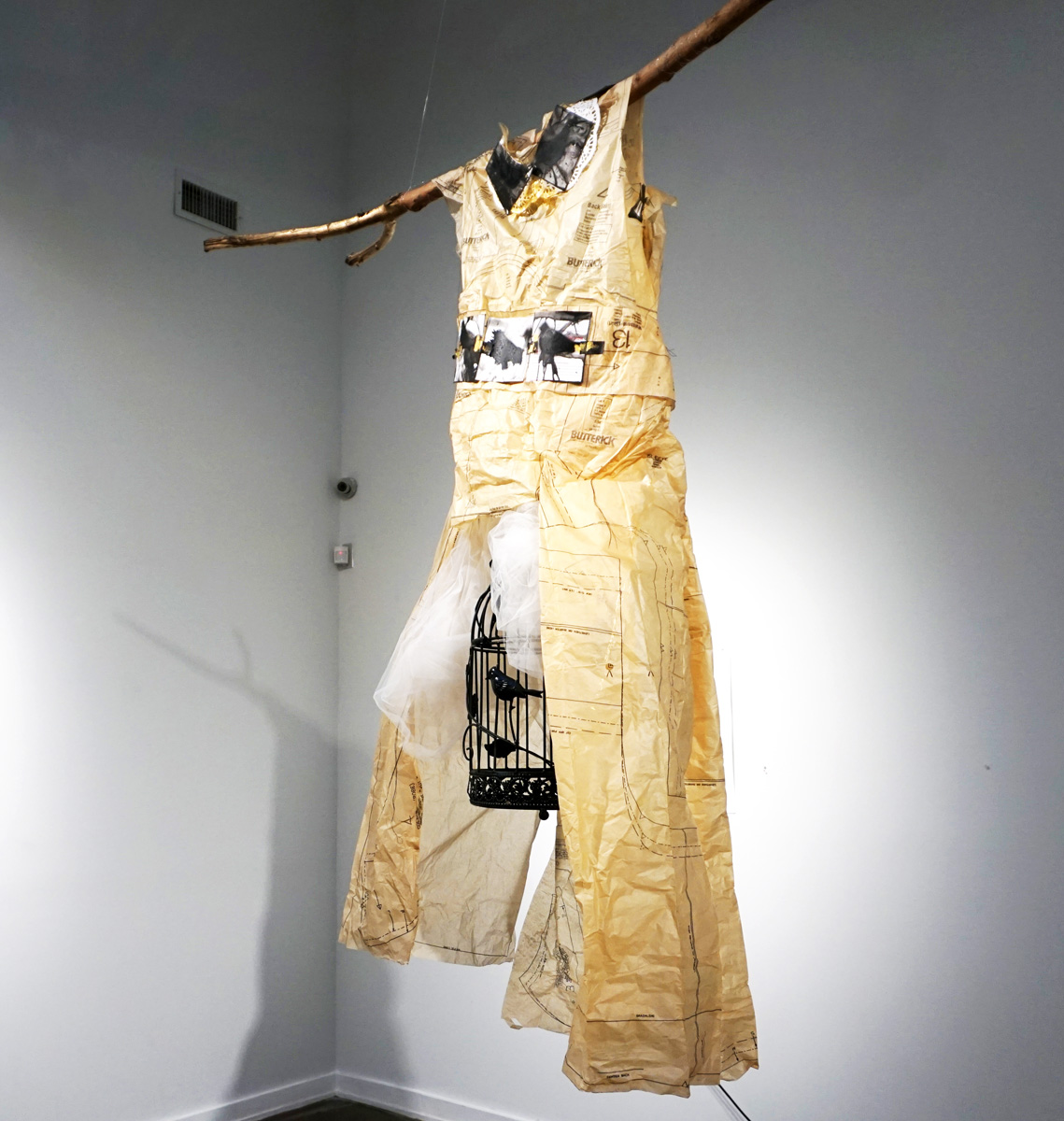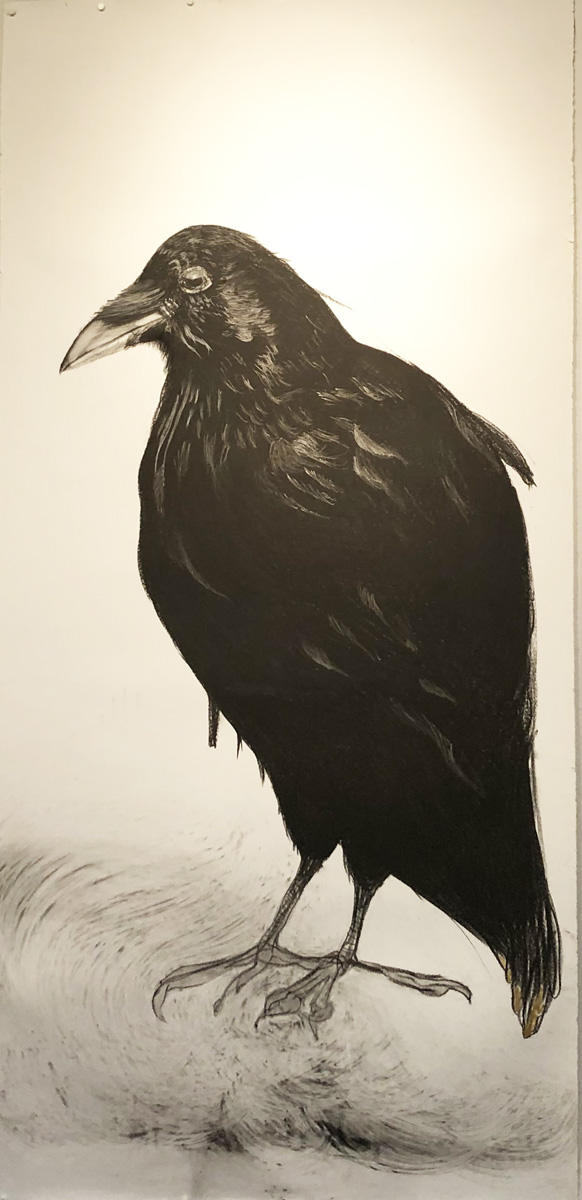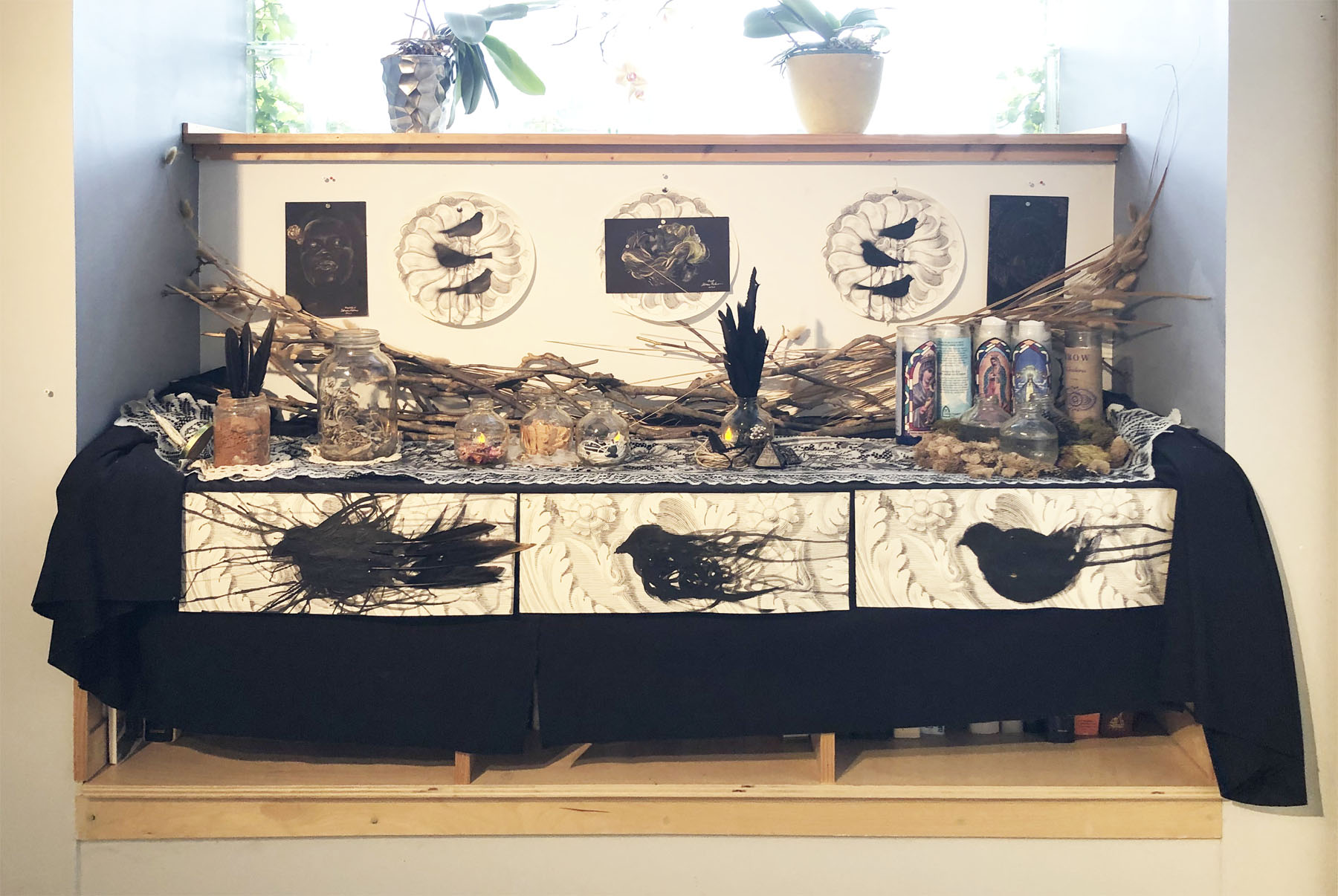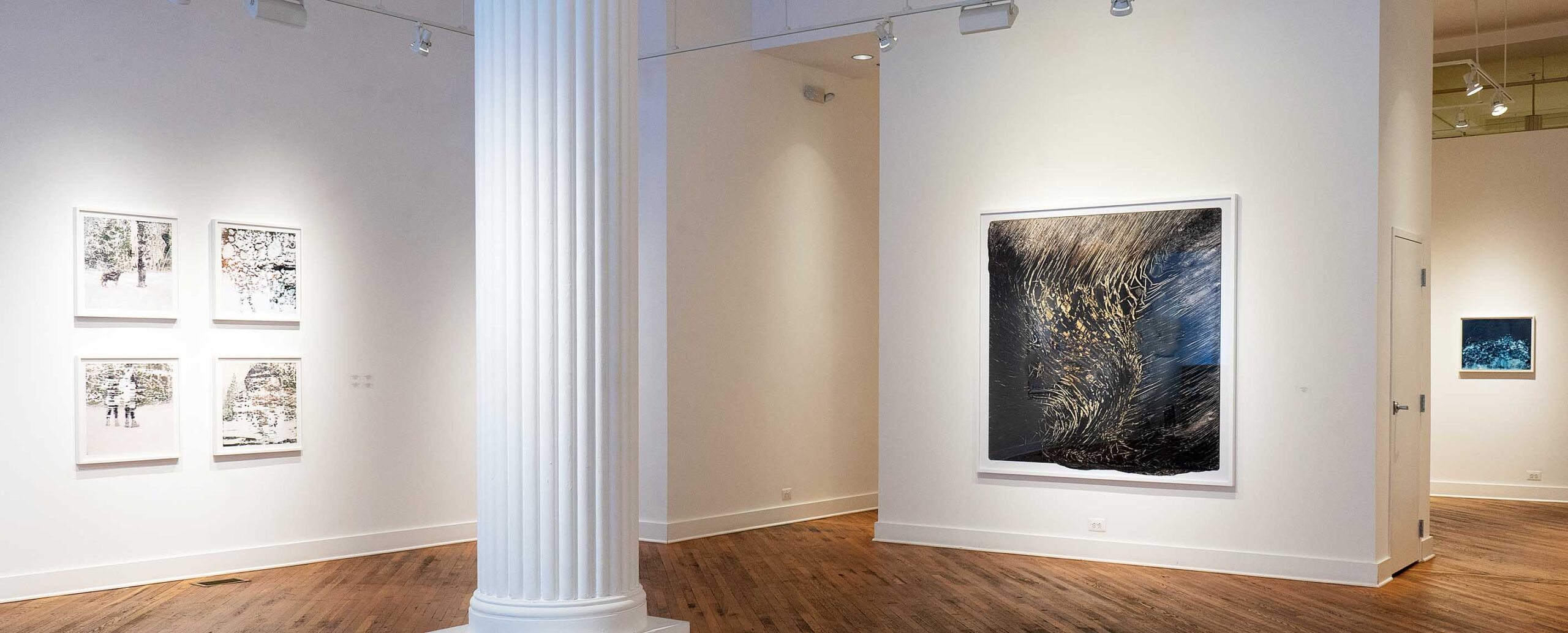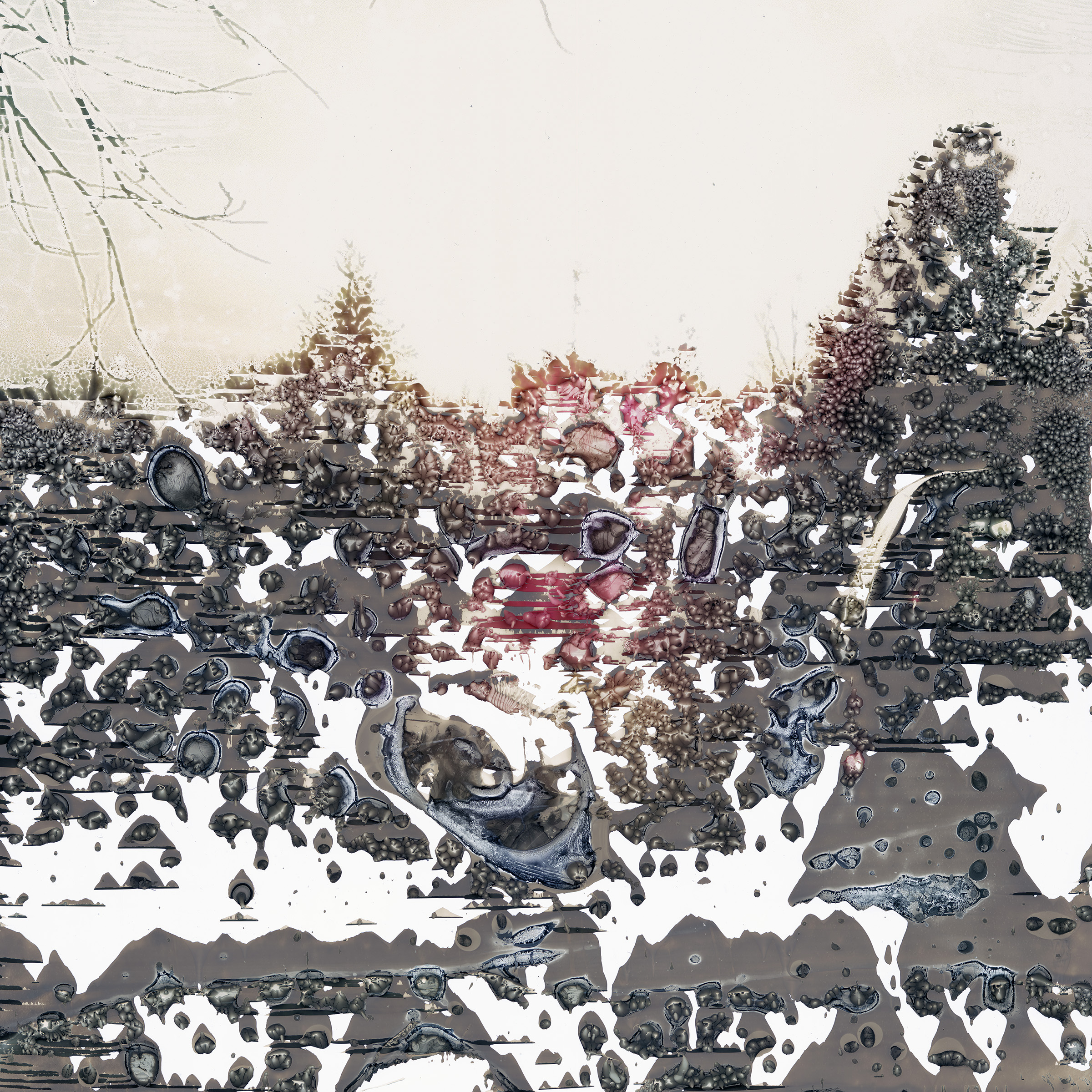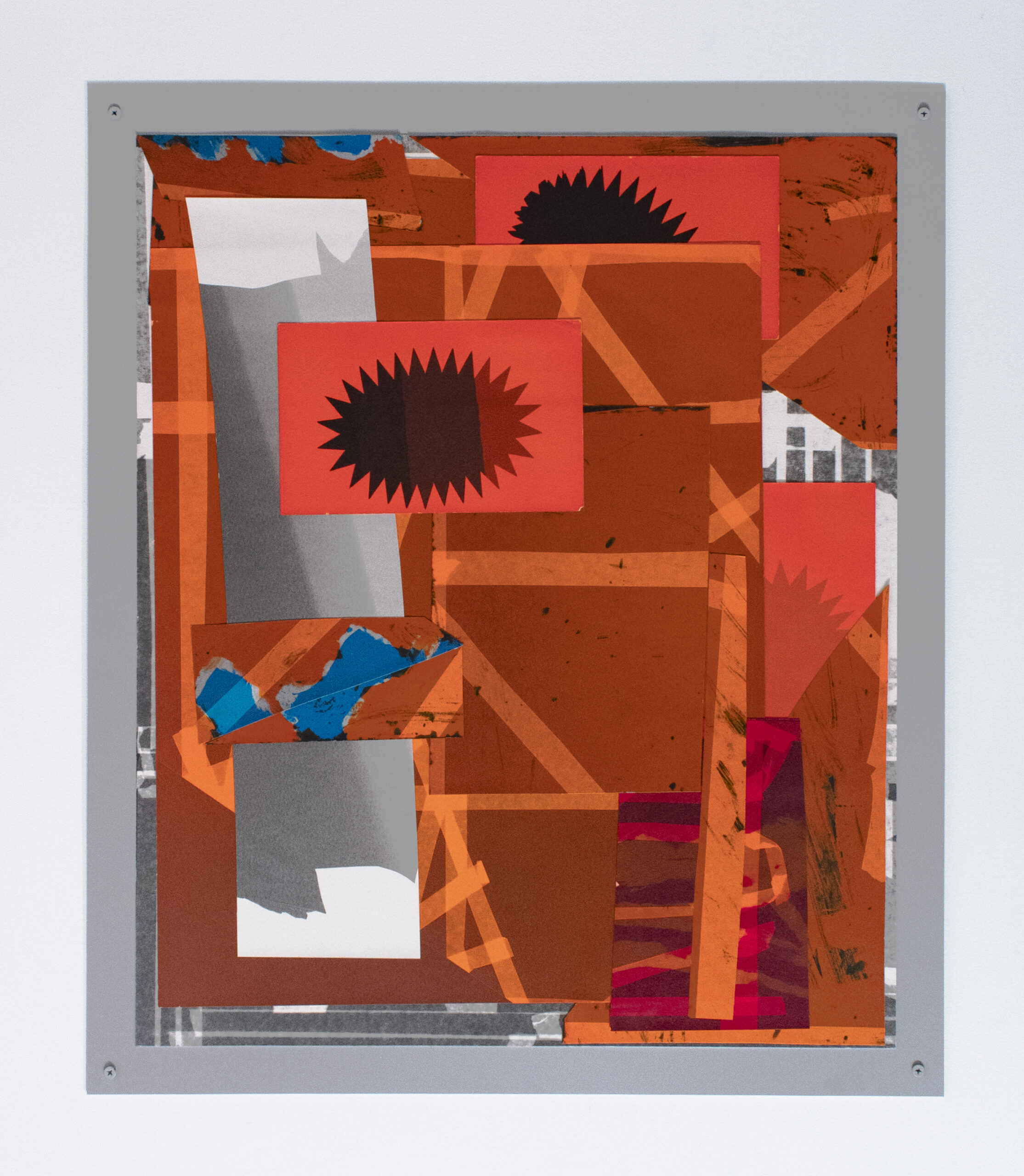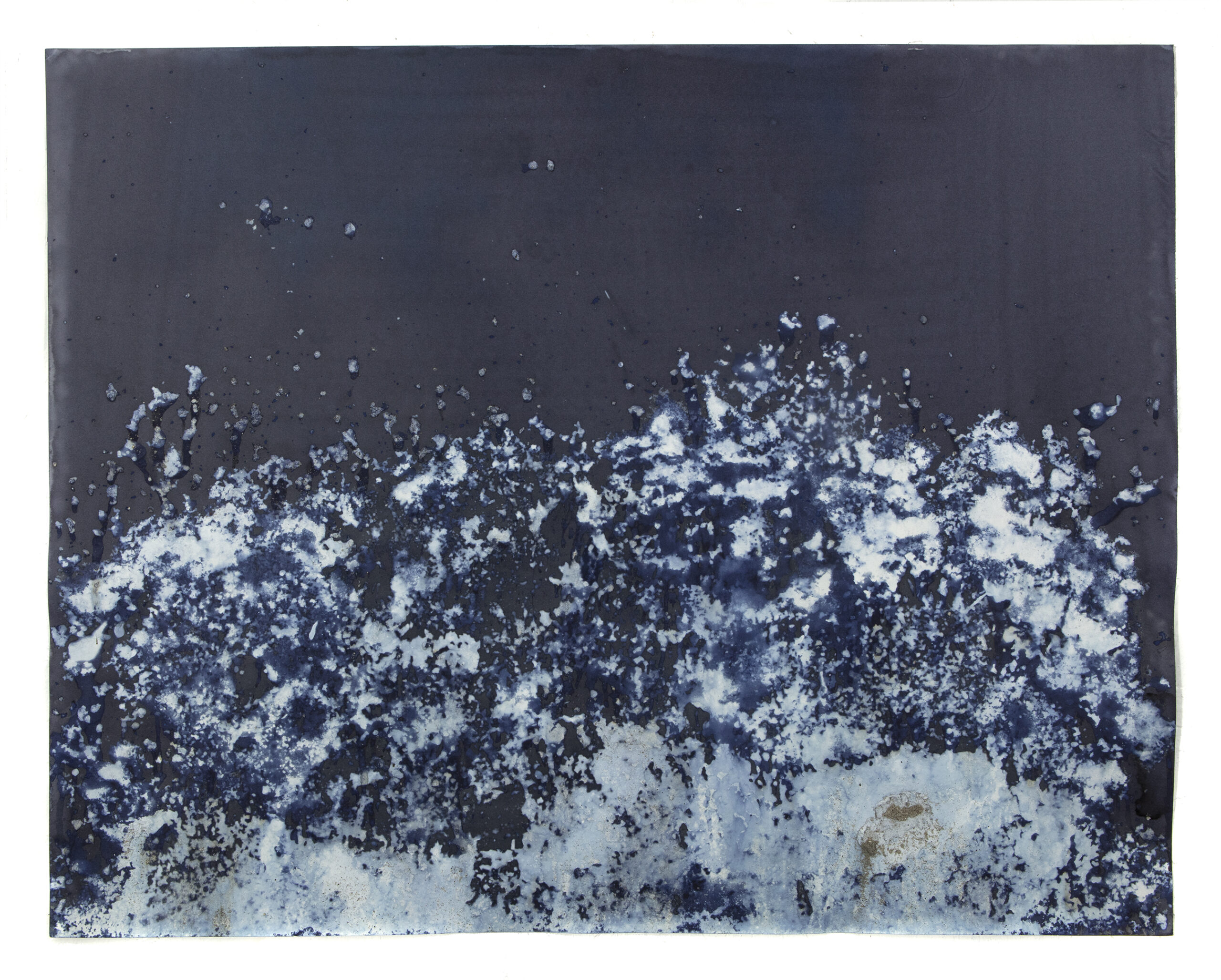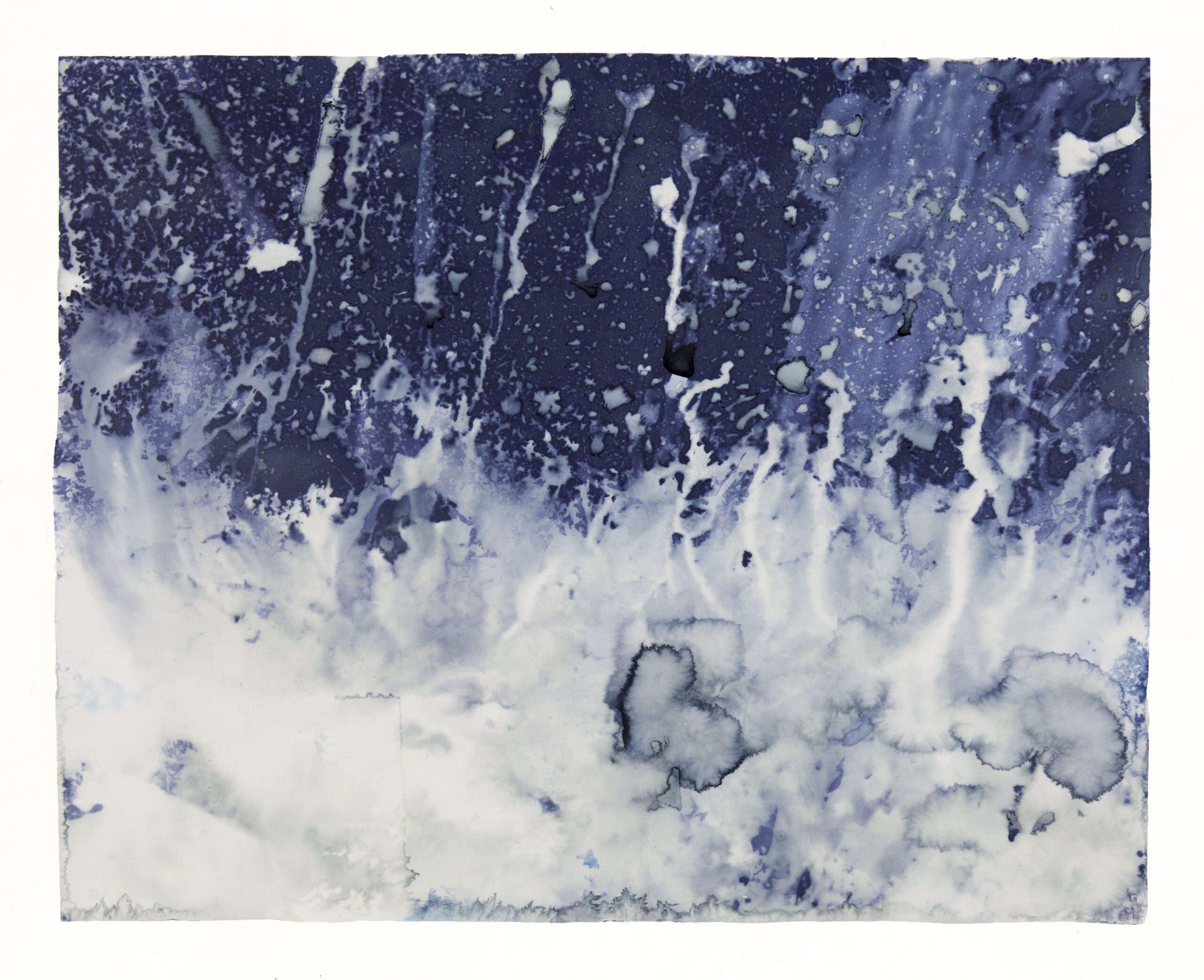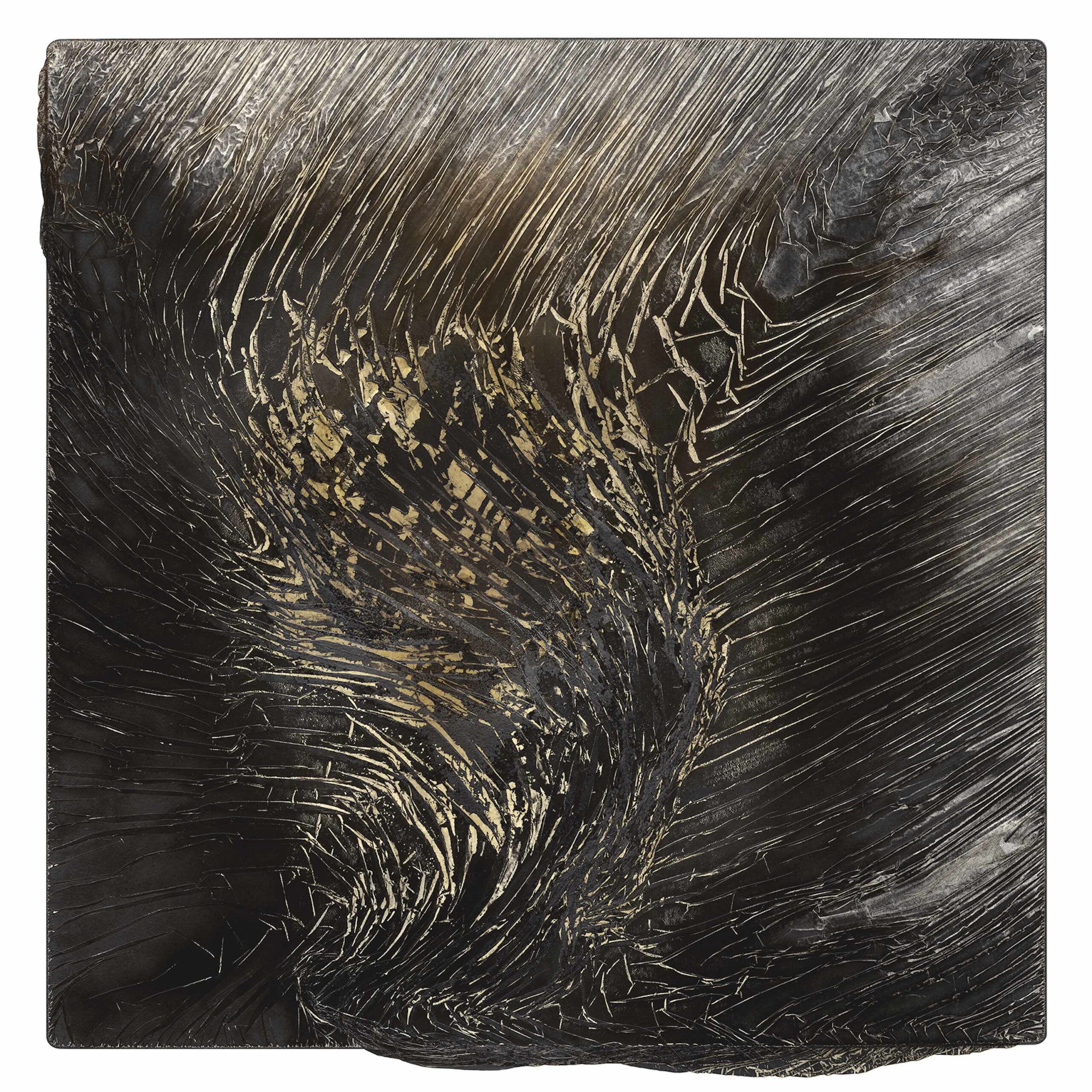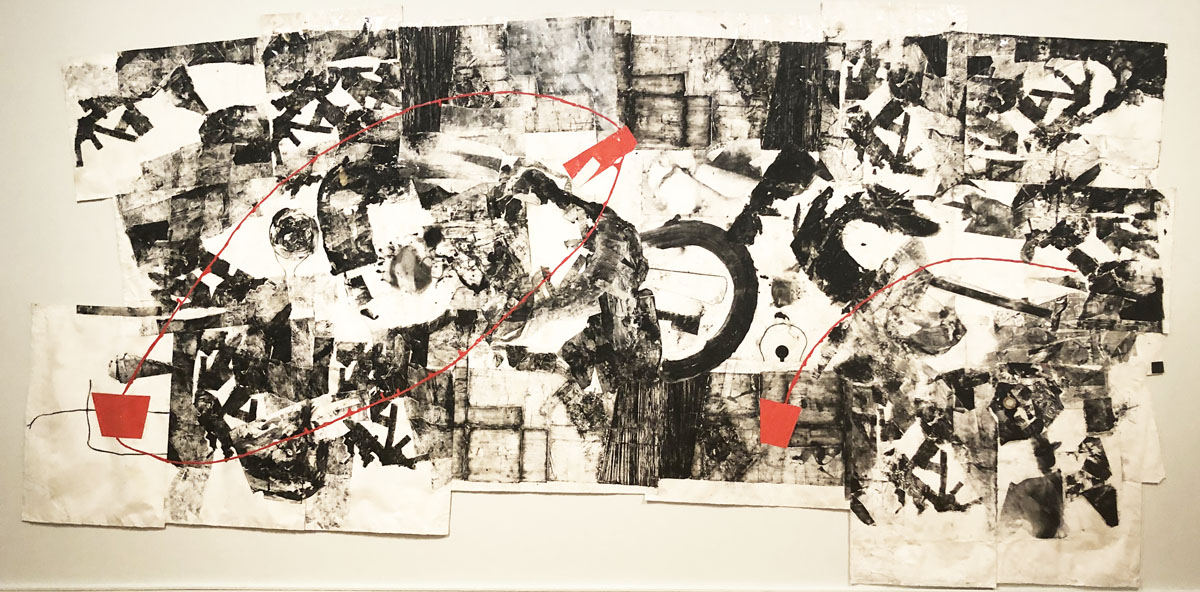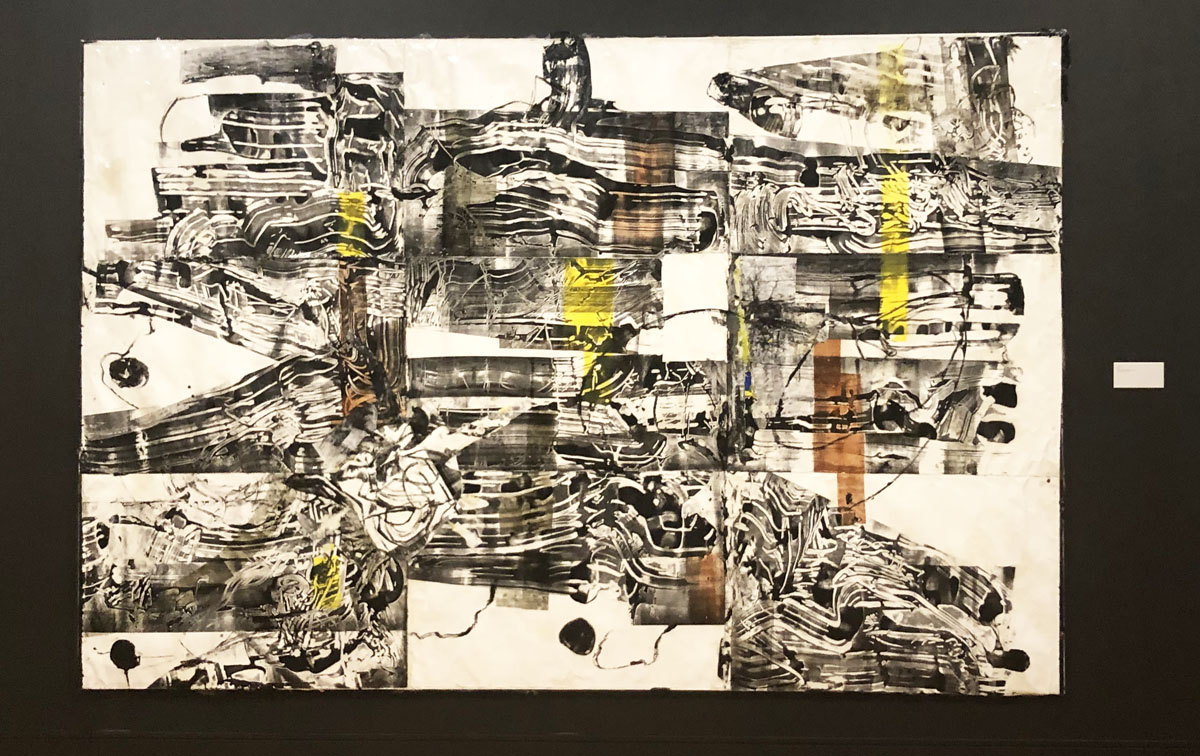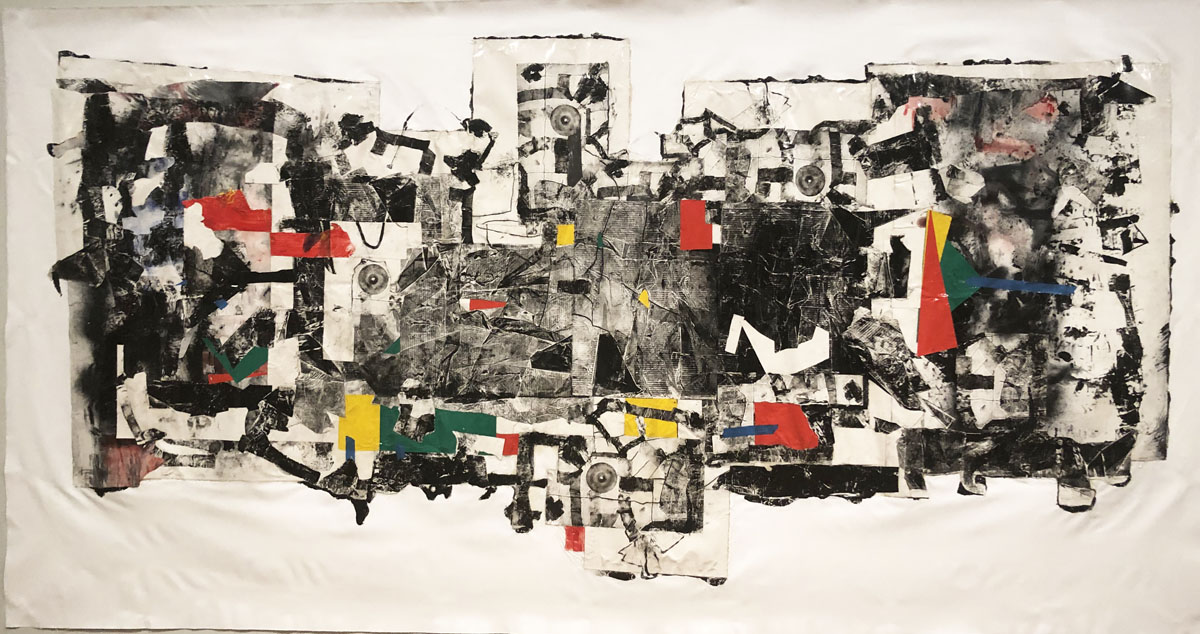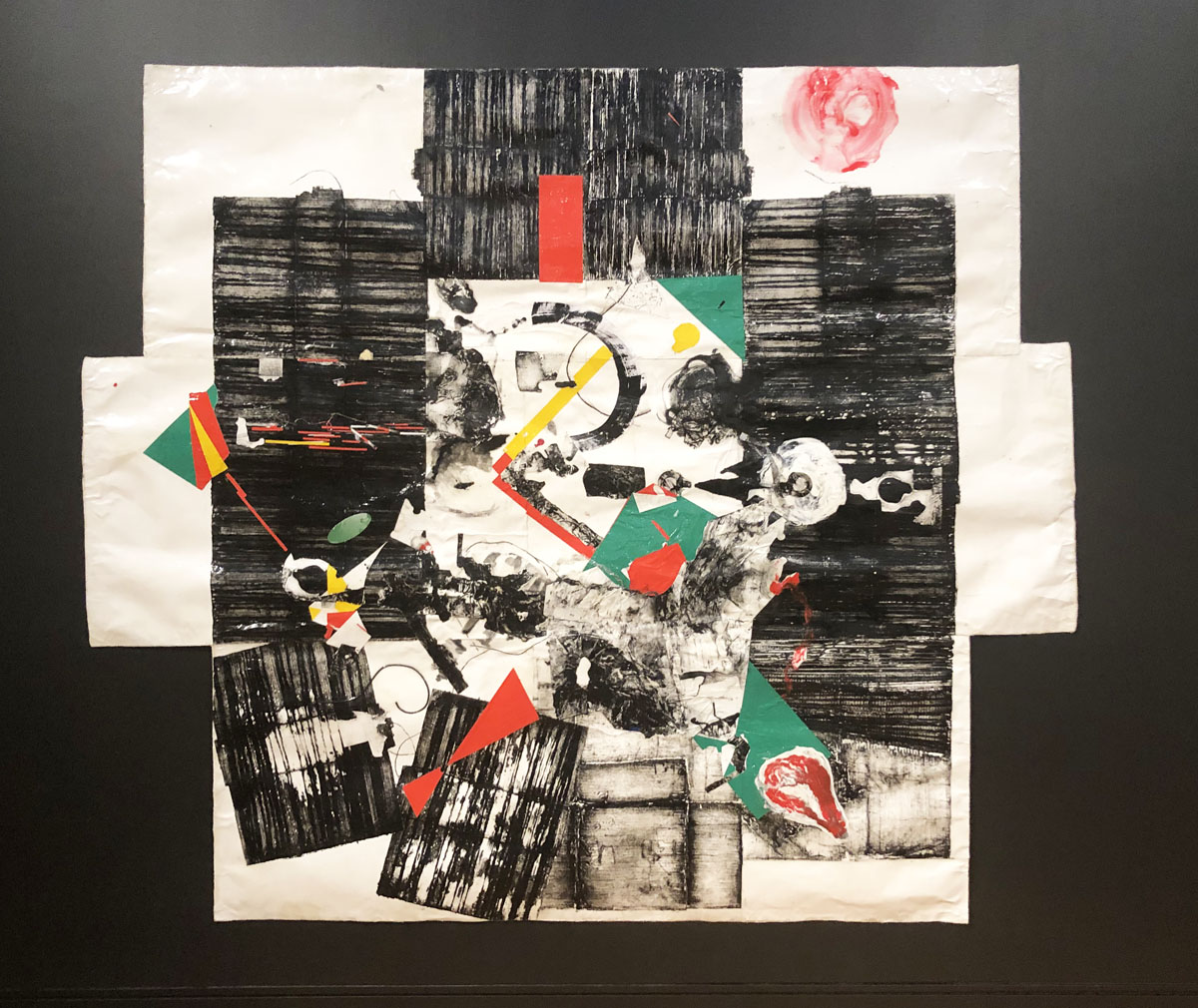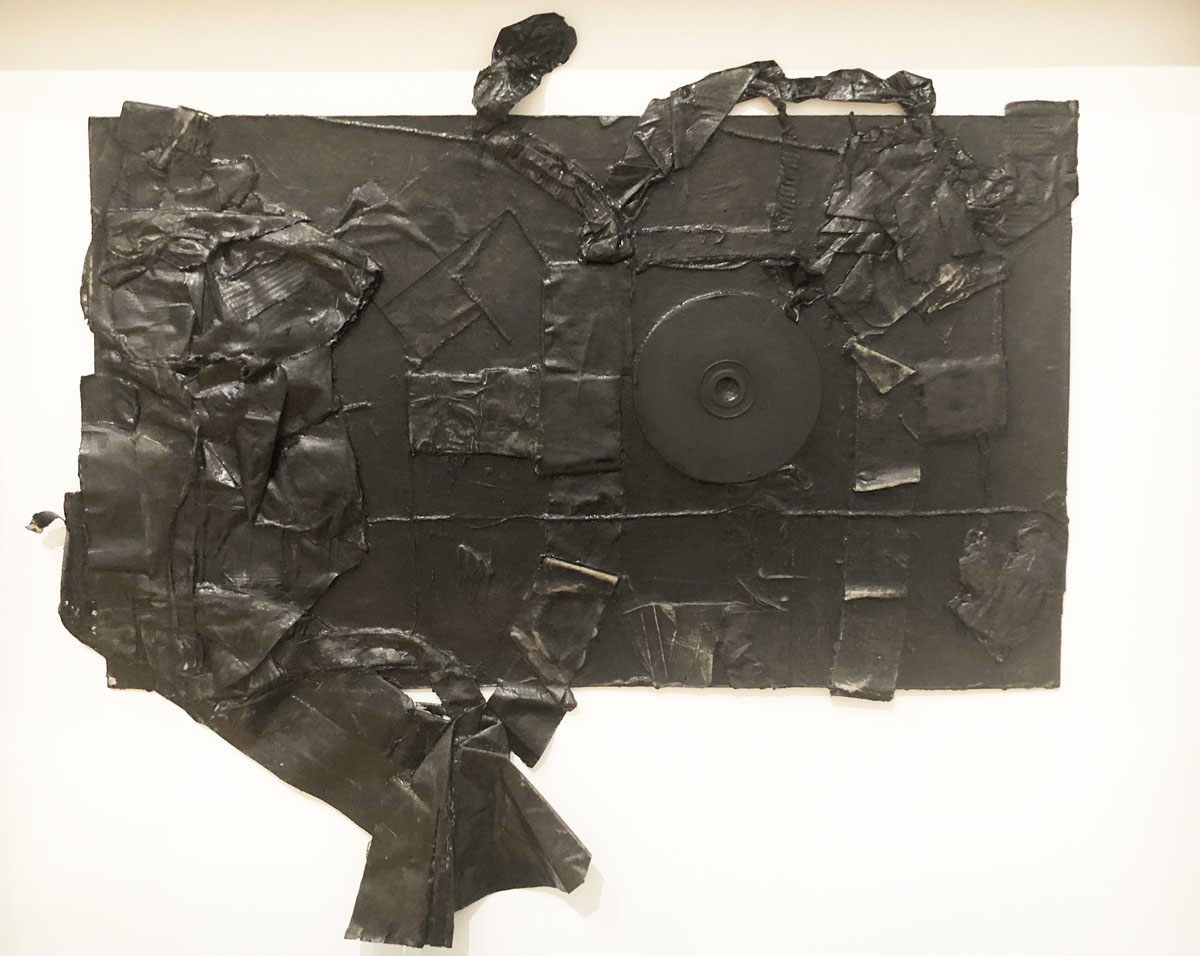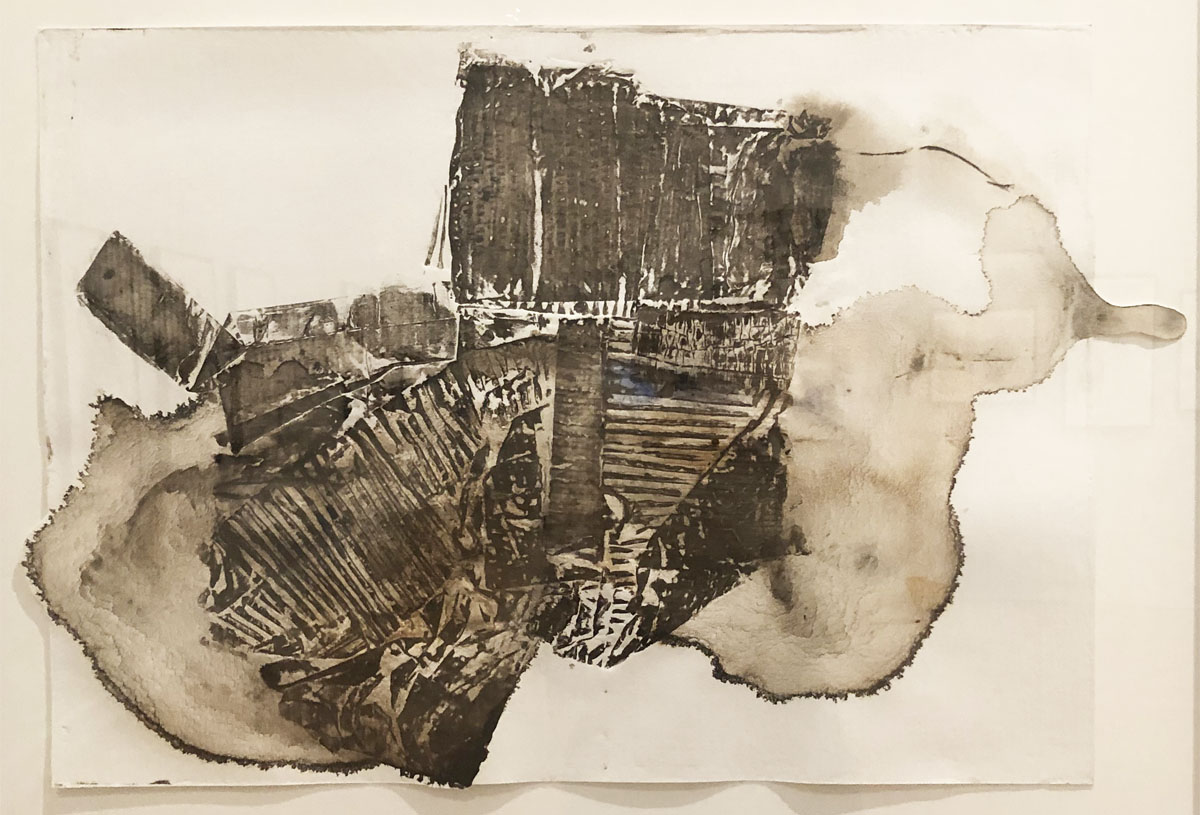
Paintings by Tom Livo, Installation shot, All images courtesy of Image Works
Like many cultural institutions in the era of Covid-19, art galleries are struggling with economic pain that goes along with the physical peril of the pandemic. So it’s a pleasure to find an art venue that is both showing interesting work and managing to keep the lights on. Image Works is the brainchild of photographer Chris Bennett, a recent arrival to the Detroit area from Portland, Oregon. While the back portion of Image Works is dedicated to Bennett’s day job as a provider of fine art and photographic printing, the front features a small but pristine gallery where the paintings of Tom Livo are on display until November 27.
In the roomful of Livo’s images now at Image Works, the artist explores childhood memories, translating family snapshots into painterly compositions that recapture and give significance to fleeting recollections of times past. Born in Garden City, Michigan in the 60’s, the CCS graduate describes his method: “I revisited family albums, shuffling through stacks of old Polaroids and snapshots, choosing which to paint. The people and situations come alive again, reigniting fond, half memories and themes that, I suppose, resonate universally.”
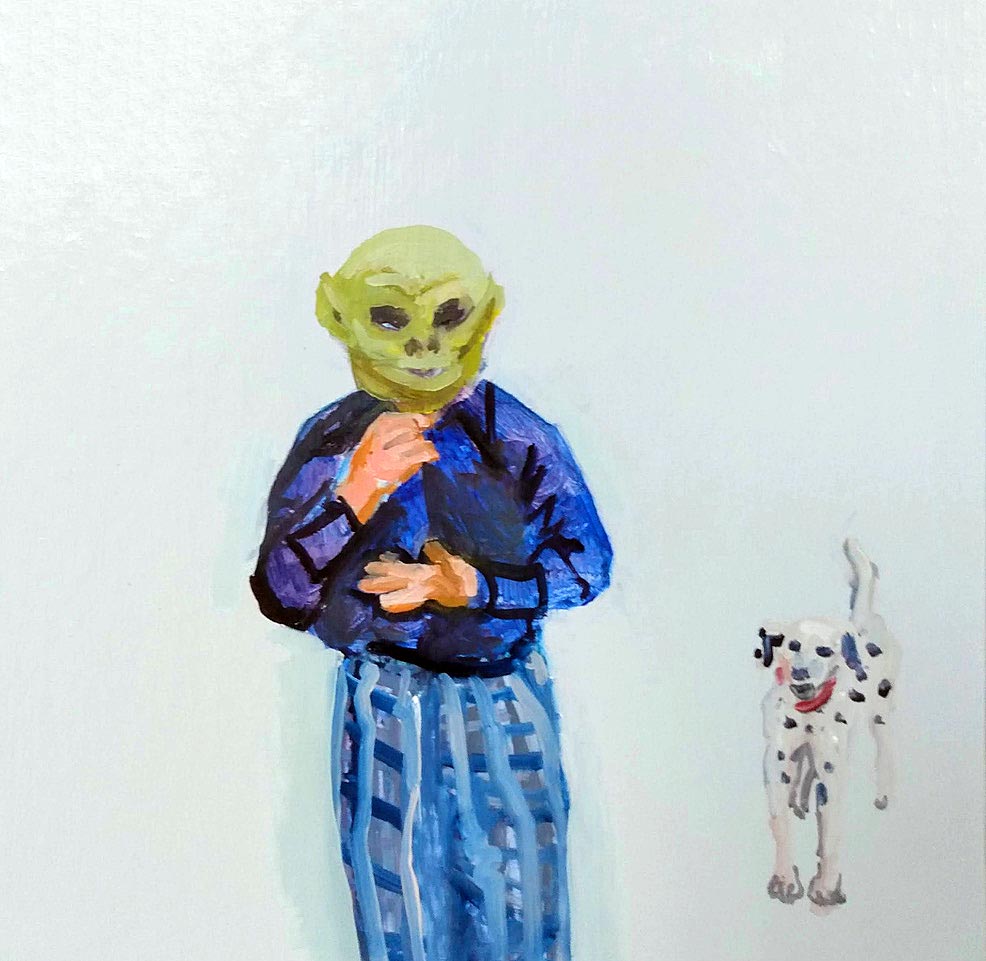
Tom Livo, Walking My Gargoyle, Oil on Board, 12×12″, 2019
Two bodies of the artist’s work are represented in the gallery, each quite different from the other in scale, palette, composition and mood. By comparing and contrasting them, we can find a way into the artist’s mind and discover both his ambivalence and his affection for family, friends and his own childhood.
One side of the gallery is packed, salon style, with small, usually colorful, paintings of figures, many of them children. Derived from photographs of long-ago holidays and parties, the kids are routinely costumed and mugging for the camera. The compositions emphasize the outsize personalities of the subjects; often the children are disguised as monsters. The pictured adults are lumpy, unglamorous, almost as monstrous as their costumed offspring, but unembarrassed by their own imperfections. They boldly make eye contact with the viewer: while they know they are being watched, they are also watching us.
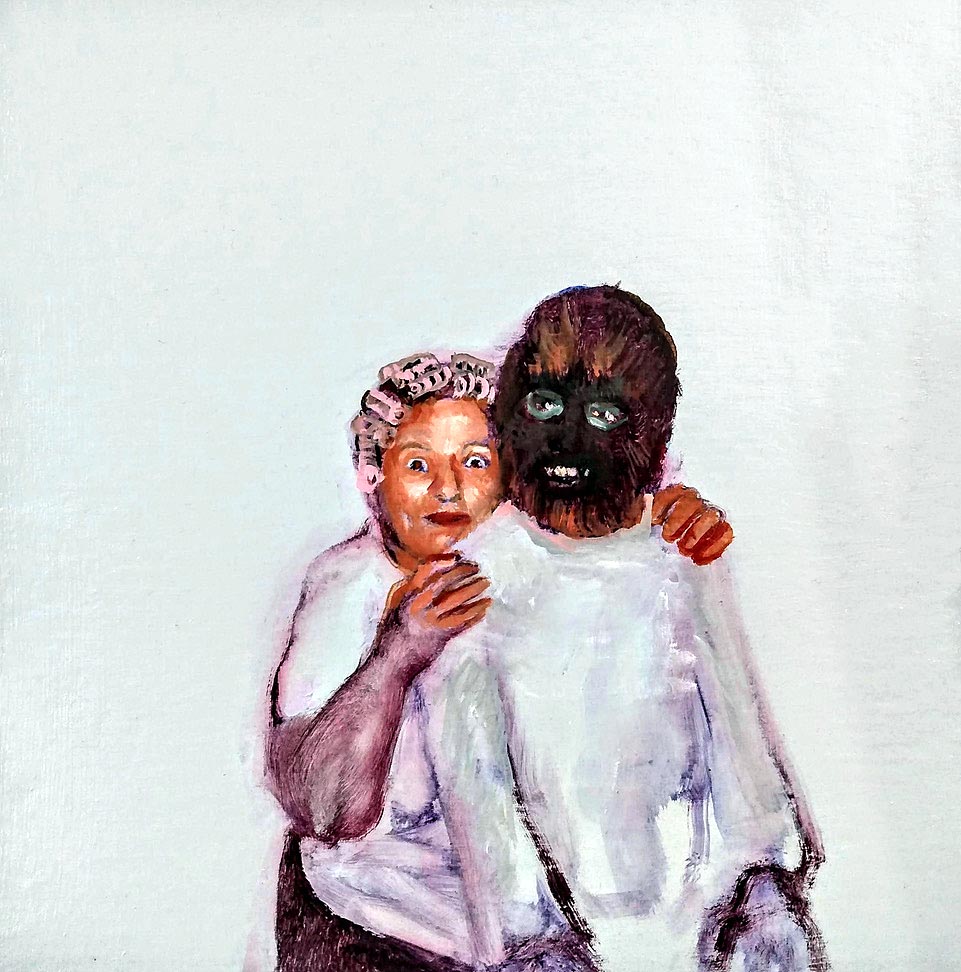
Tom Livo, The Hair Curlers, Oil on Board, 12×12″, 2019
Because the pieces in this collection are intimate in scale, the virtuosity of Livo’s brushwork surges to the fore–these small works are beautifully painted. Backgrounds are either (mostly) flat white or minimally detailed. The general effect of these paintings, while subtly menacing, is cheerful, even gleeful.
By contrast, the big monochrome paintings that make up the rest of the artworks in this exhibit are too chilly to be nostalgic. They are arms length recollections, replete with ambiguous meaning and emotion. The painting She’s Not There, is an exercise in mid-tone gray that recalls the low resolution, low contrast images of pre-color television. An elderly woman (the artist’s grandmother, as it happens) stands in a featureless room, next to a television that is as much an enigmatic presence as she is. The blank face of the turned-off set is echoed in the glare of the woman’s glasses, obscuring her eyes, and implying, it seems, the diminished presence of old age. The two companion figures, tv and woman, are relatively small within the blank expanse of the modest interior, a device the painter employs again in his painting N’Octover. In the picture, a young man reclines, apparently asleep in an armchair. The table lamp, centrally located, seems more sentient than the man. Here, the emptiness of the room suggests a barren psychic landscape where the inhabitants’ interior lives are unknown and unknowable.
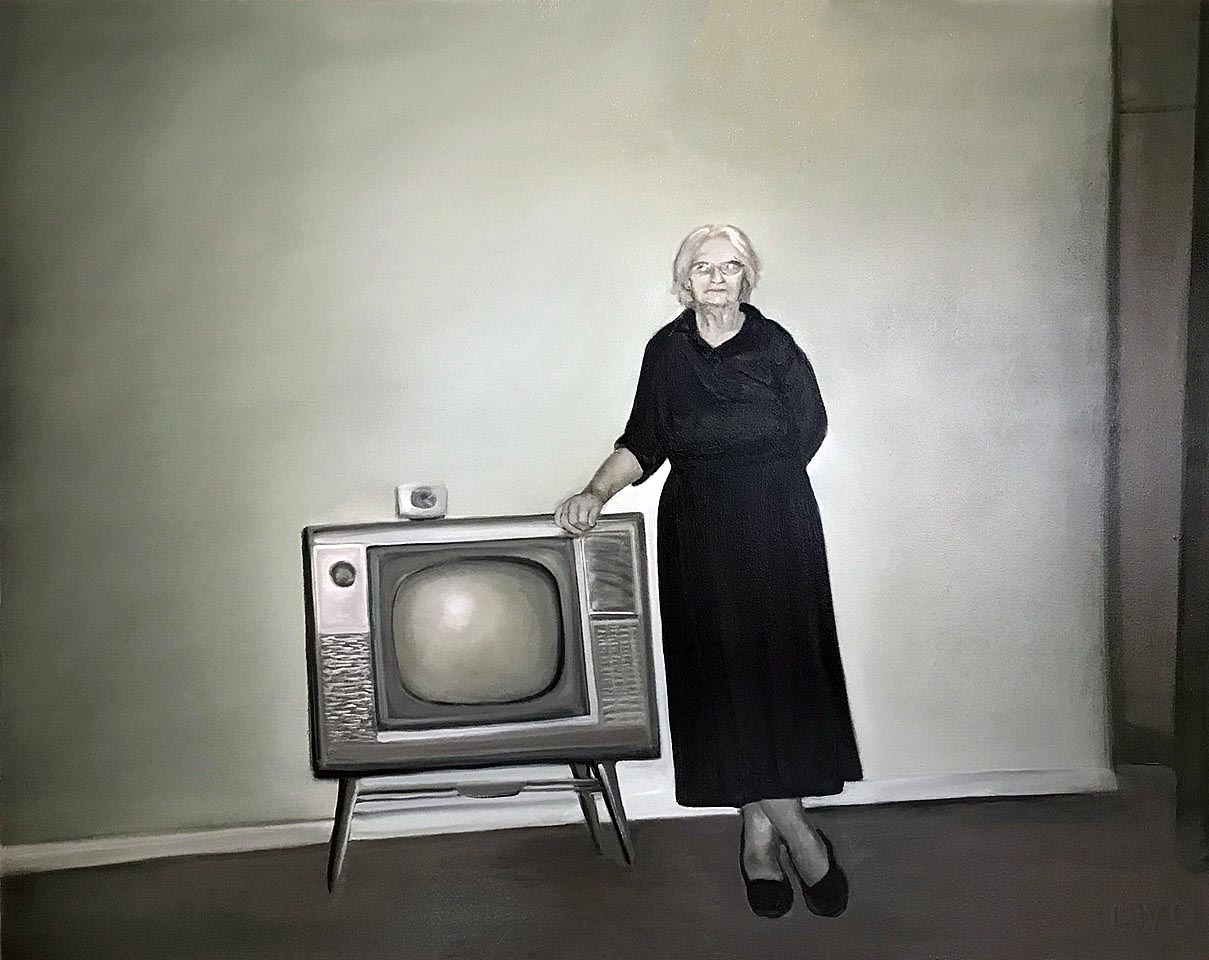
Tom Livo, She’s Not There, Oil on Canvas, 64×48″, 2020
Livo explores a different compositional strategy in his portrait of a young, bespectacled girl. Her gray face fills the picture, like a woman in a particularly joyless Alex Katz painting, and we are hard pressed to penetrate the smooth surface of her skin to find the soul within. The artist’s lens zooms back out for his most engaging black and white painting, The Riviera. Unlike She’s Not There and N’Octover, The Riviera is set outdoors, in a neighborhood very much like the one outside the gallery walls of Image Works. A tidy brick ranch home with a lush yard provides the background for a sporty muscle car in the driveway. The two men in the picture seem relaxed and satisfied with their lot, comfortable at a time when the American Dream seemed like an entitlement. Today, the neighborhood remains, but the sense of ease has gone.
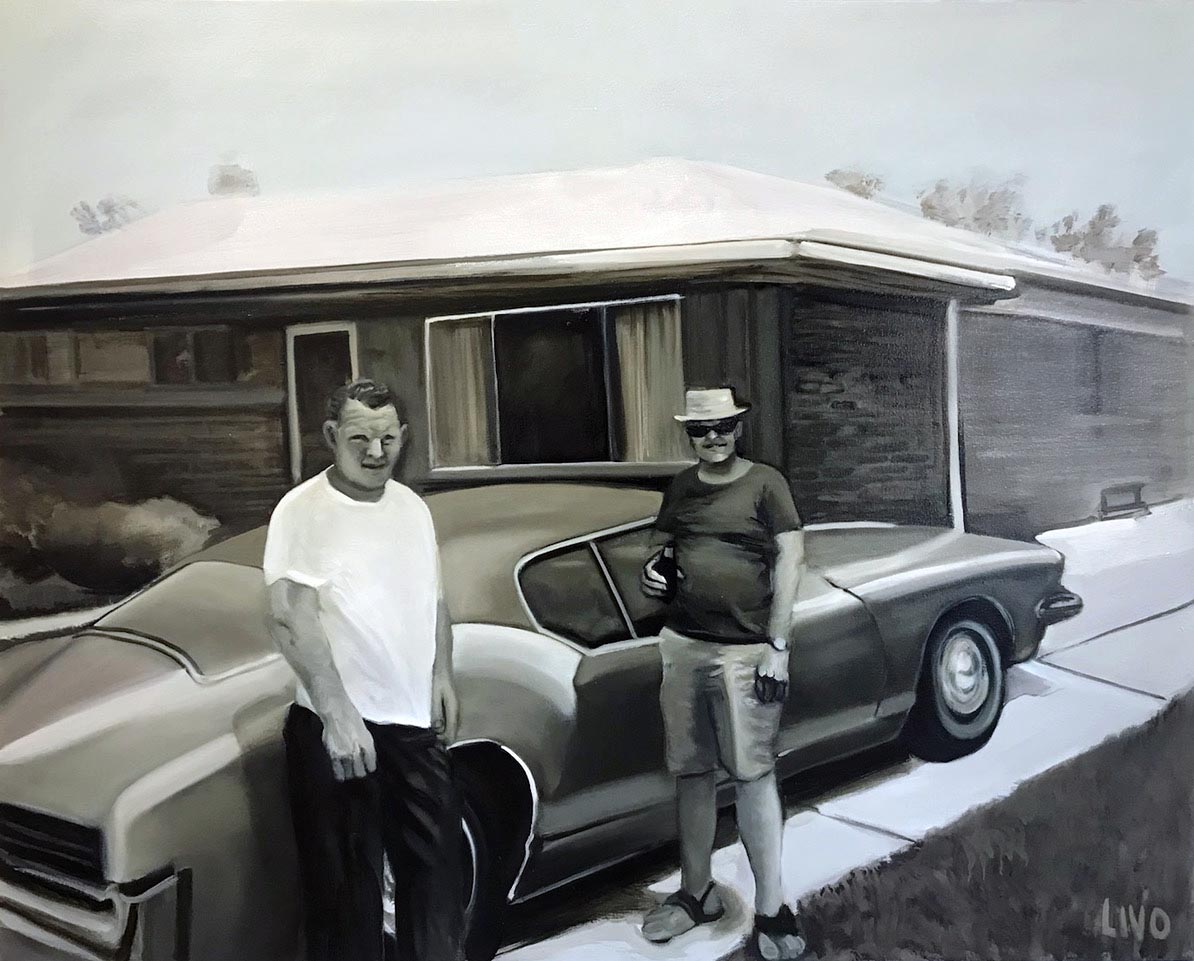
Tom Livo, The Riviera, oil on canvas, 48” x 60”, 2020
Livo’s paintings memorialize a time and place to which he can’t return, and it isn’t clear from the mood of the paintings if he even really wants to. Instead they provide a frame of reference for the present, to help us remember when things were different, if not better. The world we live in today is more consumer driven, more atomized, more diverse and less secure than ever. The past will remain forever out of reach, but with these paintings, Livo seems to be saying that, just sometimes, it’s a joyful and useful exercise to remind ourselves what those days, those people, those places–and we–were like.
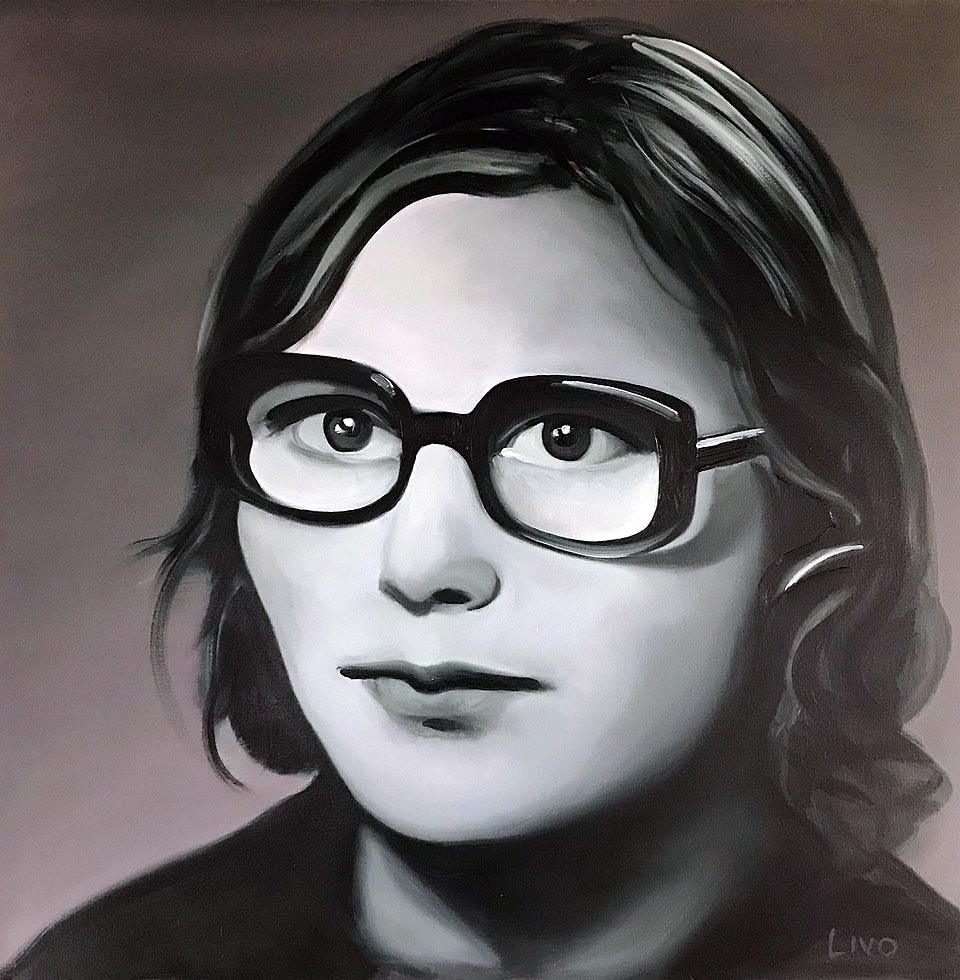
Tom Livo, Polish Karen, oil on canvas, 48” x 48” 2020
During the pandemic, Image Works, located at 3726 Monroe St., Dearborn MI 48124, is open by appointment: call 313-768-5020 or email [email protected]

